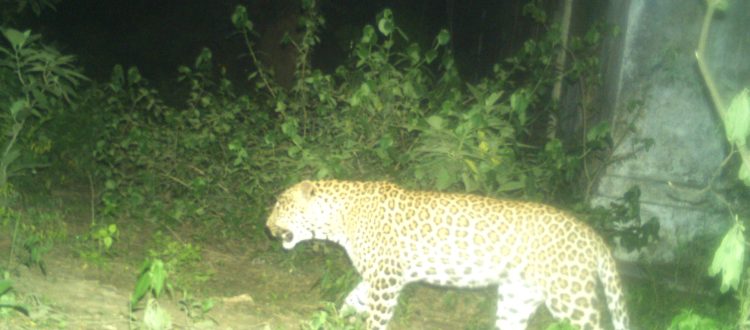The Moonwalker Leopard of Faizabad Cantonment, Uttar Pradesh
At the end of July 2022, the Rapid Response Team (RRT) stationed in Pilibhit of WTI received a request from the Divisional Forest Officer of Ayodhya. It was a call to help and assist the department in locating and monitoring the movement of a leopard reported by the residents of the Faizabad Cantonment area. Getting such a piece of news from Ayodhya is common. But this time it was a bit interesting because none were able to trace any pug marks from the area. Thus Wildlife Trust of India’s Rapid Response Team rolled up their sleeves to find the silent walking leopard.
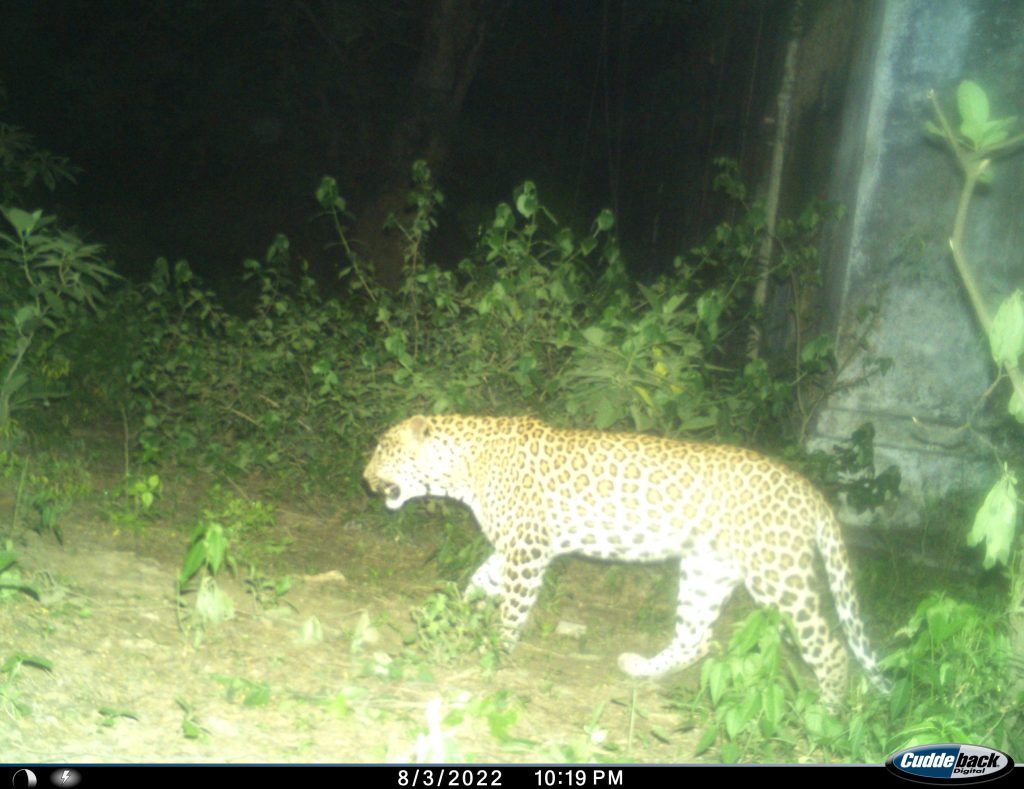
The first image of the leopard
The RRT is a team equipped with multi-skilled professionals consisting of Sociologists, Biologists, and Veterinarians. Each of them is trained in addressing and attending to wildlife conflict emergencies, monitoring, and safeguarding wild animal through appropriate measures.
After visiting the cantonment area, the team did a survey of the area and set up 22 camera traps in six zones. The first image of the leopard was captured in one of the camera traps on August 3, but till August 16, the leopard was not sighted or captured in any of the camera traps. Though there were rumors regarding the leopard’s presence frequently, it was not verified because the big cat didn’t appear in any of the camera trap frames between August 3-16. The RRT continued tracking and surveying almost 15 to 20 km per day inside the cantonment for locating the probable hiding or resting place of the leopard and re-positioned the camera traps accordingly. But the team could not even find the pugmarks or scat of the animal.
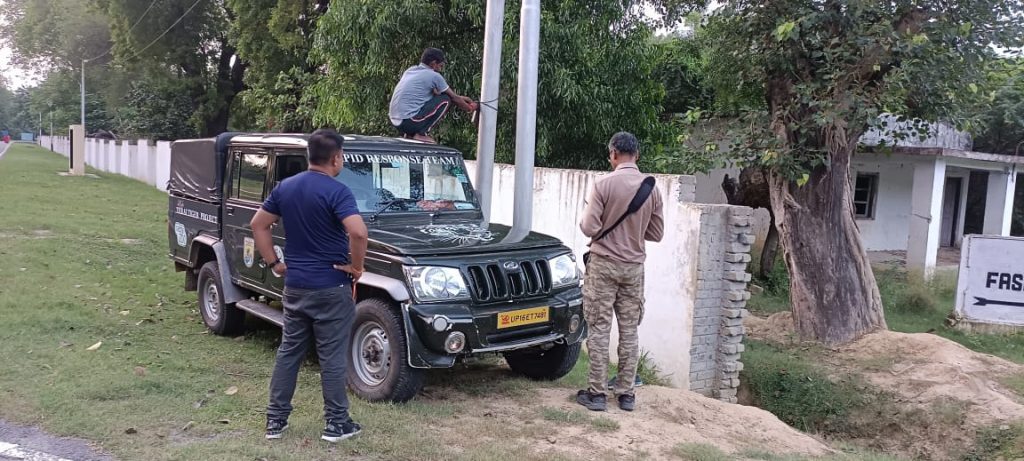
Camera traps being installed around the walls for monitoring; Photo: WTI
On August 17, the leopard was sighted again by some residents in the night, walking on the wall of the firing range adjacent to the road frequented by residents. The efforts were successful when the leopard was once again captured in the camera trap on August 18 and 19. By now the Rapid Response Team was able to identify the movement area of the leopard extending from Miran ghat on the river Saryu till Edward house via the firing range and the animal husbandry campus.
All the camera traps were deployed into these zones to monitor and track the regular movement. The area used by the leopard except the firing range were all human residence and presence areas. One of the families staying on the campus of the Edward house was almost caged inside their house during the night and faced hardship in using the toilet which was outside. The leopard was seen using the area behind their house most often as the adjacent animal husbandry campus was lying empty and was full of vegetation and old structures for the animal to take hide.
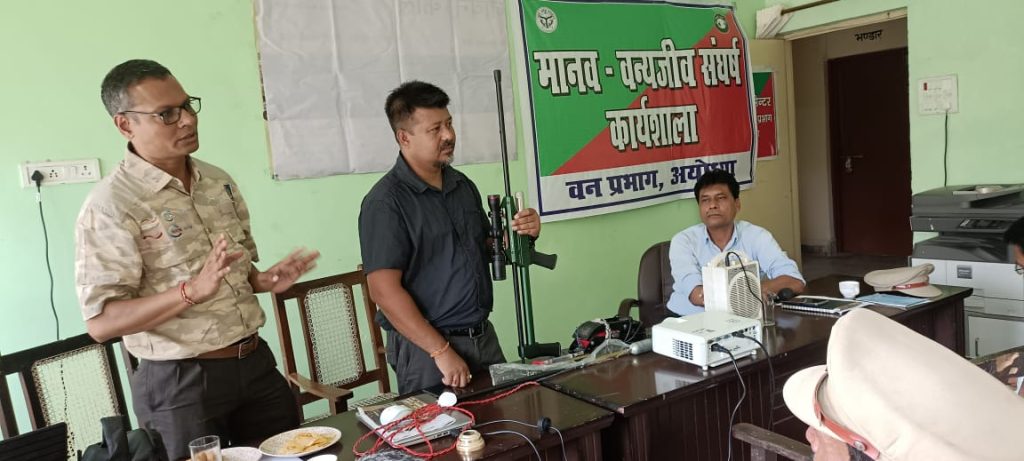
RRT team orienting the frontline staff of Ayodhya; Photo: WTI
Keeping in view the safety of the residents in the area, the forest department decided to capture and relocate the leopard and set up three trap cages. Meanwhile, the Rapid Response Team also conducted an orientation workshop for the frontline staff of the Ayodhya division on conflict mitigation in which 50 staff from the five ranges participated.
The animal was caught in one of the trap cages on August 29 and later was released in the Sohelwa Wildlife Sanctuary.
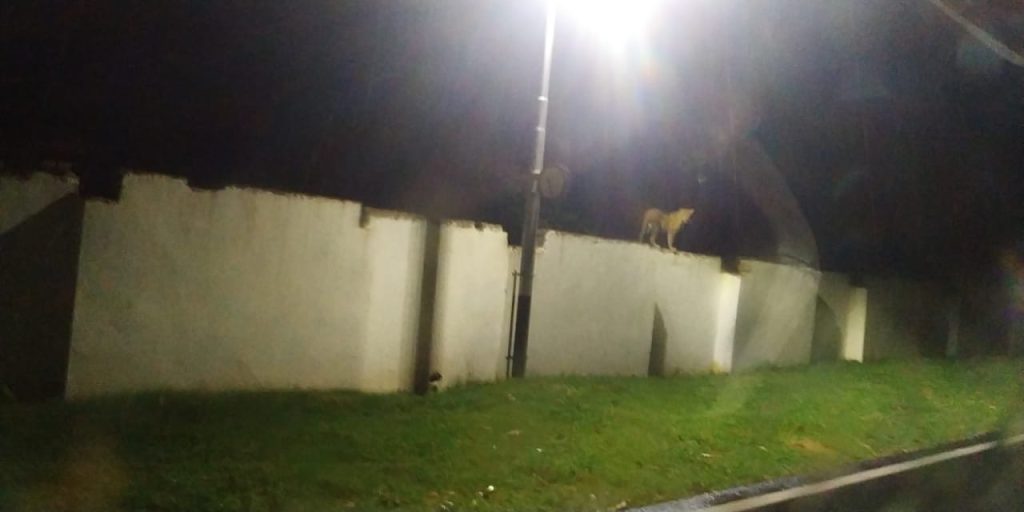
the leopard moonwalking on the walls of the firing range; Photo: WTI
Once the leopard was captured, the property owners of Edward house cleared the vegetation that had grown over time and provided cover to various wild animals. After clearing the vegetation, the team was able to see that the property had a continuous boundary wall adjoining the animal husbandry campus and extended all the way to the road from where the animal used to commute. The reason for the absent pug mark was because the leopard was moonwalking on the walls of the firing range, animal husbandry campus, and Edward house.

